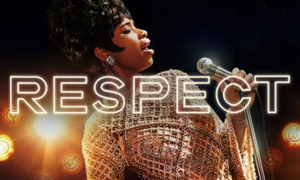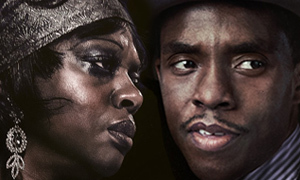Ma Rainey's Black Bottom: History vs. Hollywood
Viola Davis
Born: August 11, 1965
Birthplace:
Saint Matthews, South Carolina, USA
Gertrude "Ma" Rainey
Born: April 26, 1886 (or September 1882)
Birthplace: Columbus, Georgia, USA
Death: December 22, 1939, Columbus, Georgia, USA (heart attack)
Is Ma Rainey's Black Bottom based on a true story?
No. The movie is based on August Wilson's 1982 play of the same name. It is one title in the Pulitzer Prize-winning playwright's series of ten plays that are collectively known as The Pittsburgh Cycle (or the American Century Cycle) and center on African American experiences in each decade of the 20th Century. Denzel Washington, who produced the film, also produced (and starred in) the adaptation of Wilson's play Fences, another in the series. It also starred Viola Davis. Ma Rainey's Black Bottom is the only one to include a real person, Gertrude "Ma" Rainey, portrayed by Davis. However, as we'll explain below, most of the plot is fictional.
Does Viola Davis do her own singing in Ma Rainey's Black Bottom?
No. While researching the true story of Ma Rainey vs. the Viola Davis movie, we discovered that singer Maxayn Lewis performed most of the songs for actress Viola Davis, who portrays Gertrude "Ma" Rainey in the film. -Vanity Fair
Is Chadwick Boseman's character, trumpet player Levee Green, based on a real person?
No. Levee Green (Chadwick Boseman) is an entirely fictional character, as are almost all of the other characters in the Black Bottom movie, outside of Ma Rainey (Viola Davis). This includes bandmates Toledo, Cutler, and Slow Drag, as well as Rainey's producer, Mel Sturdyvant. As stated in the previous question, the storyline is fictional as well, including Levee's fling with Rainey's girlfriend in the movie, Dussie Mae (Taylour Paige), and Levee stabbing bandmate Toledo. The real Ma Rainey did perform with a band in the 1920s, and we see a photo of them during the movie's closing credits. A description accompanying the 1923 photo reveals their names to be Ed Pollack, Albert Wynn, Thomas A. Dorsey, Dave Nelson, and Gabriel Washington. It has also been reported that members came and went from the band quite frequently.
Did the turbulent 1927 recording session at Paramount studios take place in real life?
No. In answering the question, "How accurate is Ma Rainey's Black Bottom?" we discovered that while Rainey did make her first recordings in a Chicago studio for Paramount Records, the turbulent 1927 recording session in the movie, which she arrives late to, is imagined. However, some of the topics that arise during the session, including Ma Rainey's struggle for acceptance in an industry controlled by white men, her and Levee's struggle for creative ownership of their music, and the swirling sexual tension (including Rainey's relationships with women), are all themes that Rainey experienced in real life in the 1920s.
It's true that black stars were often exploited, with many signing away the ownership of their songs and future royalties to white producers and record companies, a form of cultural theft that would continue for decades. "They don't care nothing about me. All they want is my voice," says Viola Davis as Ma Rainey in the movie.
Is "Ma Rainey's Black Bottom" an actual song that Rainey recorded?
Yes. While answering the question, "Is Ma Rainey's Black Bottom a true story?" we learned that the song that Viola Davis' character and the band are recording, titled "Ma Rainey's Black Bottom," is an actual song of hers. In real life, she recorded it in 1927 in response to the 1920s dance craze called the black bottom. Rainey was among several artists who recorded dance tracks for the black bottom dance.
Were racial tensions high in Chicago in 1927?
Yes. Chicago was one of the northern destinations that more than six million blacks relocated to during The Great Migration, which took place from about 1916 to 1970. Strict segregation laws and a lack of economic opportunities in the South drove many blacks north, where they filled the demand for industrial workers during World War I. While living in the North was an improvement for blacks, it by no means meant life was good. Racism was rampant, especially in major cities like Chicago.
While examining the Ma Rainey's Black Bottom true story elements, we discovered that the atmosphere in Chicago reached a boiling point in the summer of 1919. A seventeen-year-old black boy was swimming in a local pool and accidentally crossed an invisible line that segregated blacks from whites. The boy was attacked and drowned. Realizing that the police weren't going to make an arrest, black people gathered in the streets and protested. Clashes with whites and the police ensued. A white mob descended on the black Chicago neighborhood of Bronzeville. After five days of unrest, 37 people were dead, 536 wounded, and more than a thousand displaced from their homes. The Ma Rainey's Black Bottom movie takes place eight years after the tragedy. However, things in Chicago hadn't improved much and racial tensions were still running high. -Esquire
Was Ma Rainey bisexual?
Yes. Born Gertrude Pridgett in 1886, she took on the stage name 'Ma Rainey' after her marriage to performer William 'Pa' Rainey in 1904 when she was 18. The couple performed as a duo before separating in 1916. It's been reported that she had relationships with both men and women. According to the Ma Rainey's Black Bottom true story, she is rumored to have had a relationship with Bessie Smith, a fellow blues singer who had been one of her chorus girls. Smith loosely inspired Rainey's girlfriend in the movie, Dussie Mae (Taylour Paige). Rainey mentored Smith during Smith's early years.
Rainey didn't publicly identify as bisexual but she was rather open about her sexuality in her music. While she sung predominately about love affairs with men, some of her lyrics eluded to love affairs with women. "Went out last night with a crowd of my friends. They must've been women, 'cause I don't like no men," go the lyrics to her 1928 song "Prove It On Me Blues." The New York Times reported that she once had to be bailed out of jail for participating in an orgy with her female backup dancers in Chicago.
Did Ma Rainey play a pivotal role in the evolution of blues music?
Yes. In determining whether Ma Rainey's Black Bottom is based on a true story, we learned that Rainey, who was nicknamed the "Mother of the Blues," was "the first entertainer to successfully bridge the divide between vaudeville — the cabaret-style shows that developed out of minstrelsy in the mid-1800s, and catered largely to white audiences — and authentic black Southern folk expression" (The New York Times). She was among the first generation of musicians to record their music. Her 'moaning' way of singing and hypnotic stage presence also helped to earn her the nickname the "Mother of the Blues," which was just one of the monikers Paramount used when marketing her.
Ma Rainey said that she was first exposed to blues music in 1902 while performing in a Missouri town. A young girl approached her with a sad, soulful song about a lover who had vanished. She memorized the song and incorporated it into the encore of her show. She even claimed to have spontaneously come up with the term 'blues' when someone asked her what type of song it was. -Encyclopedia.com
Did Ma Rainey quickly fall out of popularity and slip from the public's consciousness for decades?
Yes. Despite recording over 100 songs in a five-year period in the 1920s, including "Moonshine Blues," "Bo-Weevil Blues," "See See Rider Blues," "Soon This Morning," and "Ma Rainey's Black Bottom," her popularity declined as her style of blues was no longer fashionable and other forms of popular music had risen in the charts. The economic downturn of the Great Depression also meant fewer touring dates for Rainey, who effectively retired in 1935. She passed away from a heart attack four years later on December 22, 1939. Her music fell from the public's consciousness for decades, mainly because the recordings she did for Paramount were of inferior audio quality and went out of print. They weren't reissued until the 1960s, allowing her to posthumously slip back onto the public's radar and reclaim her role as one of the most notable and groundbreaking blues musicians. -Biography
Do the movie and the play end the same way?
Not exactly. In pitting August Wilson's Ma Rainey's Black Bottom play vs. the movie starring Viola Davis, we discovered that the play ends with Rainey's trumpet player, Levee Green, stabbing her pianist Toledo in the back with a knife. The movie adds an additional scene after this moment, showing a group of white musicians in a studio recording the song that Levee gave to his manager, emphasizing that it wasn't uncommon for black musicians to have their work hijacked by more mainstream white artists.
Is Ma Rainey's Black Bottom actor Chadwick Boseman's final film?
Yes. Chadwick Boseman died of colon cancer on August 28, 2020 while the movie was in post-production. He was 43. It is his final film appearance. The movie is dedicated to his memory. Boseman won a Golden Globe for his role as the fictional trumpet player Levee Green. He was also nominated for a Best Actor Academy Award.
Have other movies been made about Ma Rainey?
Mo'Nique portrayed Rainey in the 2015 HBO movie Bessie, a biopic about Rainey's protégée (and rumored lover) Bessie Smith. Theresa Merritt played Rainey in the initial Broadway run of August Wilson's play in 1984. Whoopi Goldberg portrayed Rainey in the Broadway revival in 2003. Charles S. Dutton played Levee Green in both the original and the revival.
Listen to Ma Rainey Songs
Below you can listen to two Ma Rainey songs, "Prove It On Me Blues" and "Ma Rainey's Black Bottom," the song that both the play and movie were named after.







